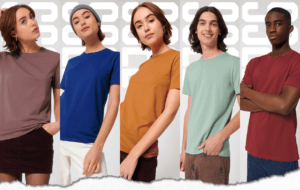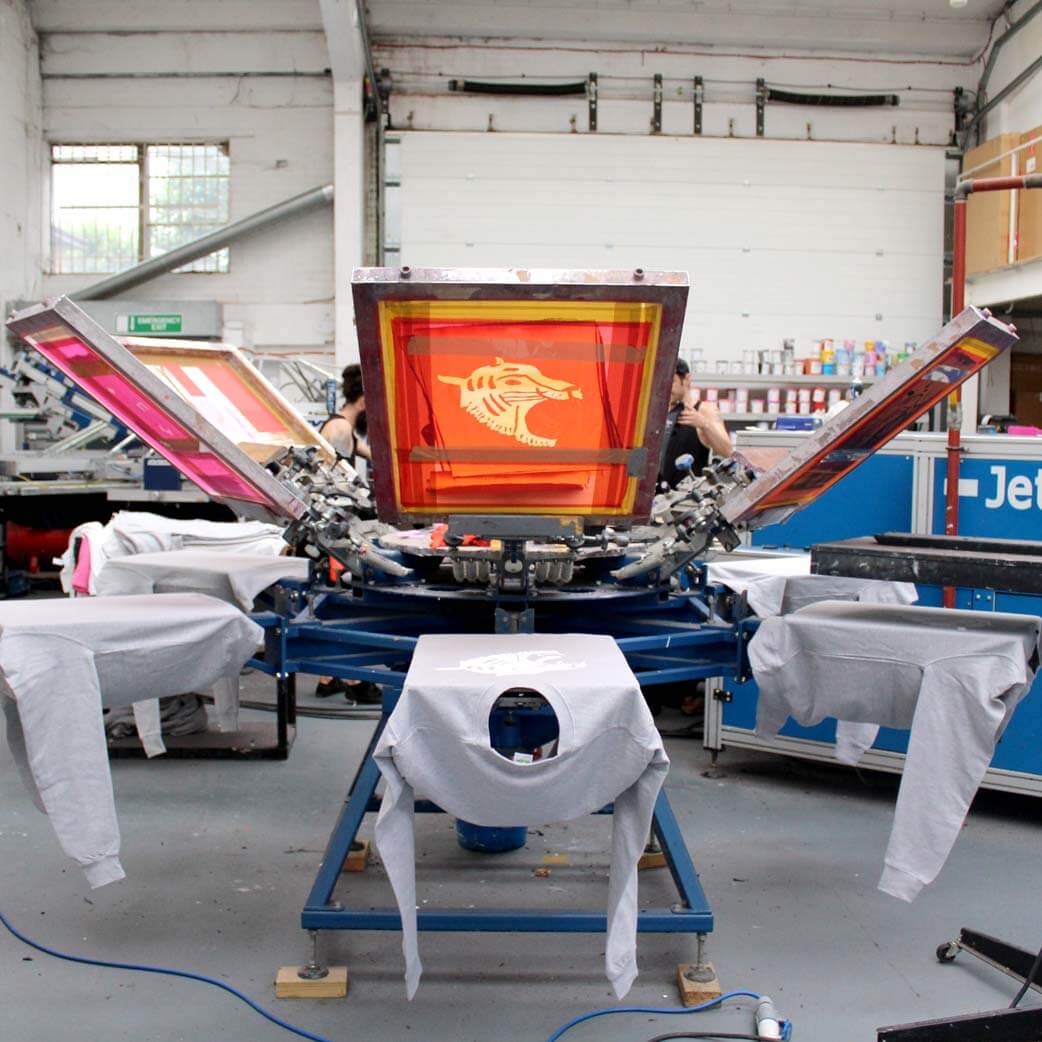With a rising sea of brand offerings, the need for individuality in the apparel industry has become imperative. To create your unique identity, you need apparel that stands out from the rest, garments that bear your distinctive mark and tell a story. This article will equip you with three essential tips for designing standout apparel that genuinely represents your brand.
Tip 1: Start with a Unique Concept
Successful apparel design always starts with a unique concept. Here is where your creativity and understanding of your target market come into play. Your concept should be a blend of the vision of your brand, the preferences of your target audience, and the latest trends in the fashion industry.
Take Patagonia, for instance, a company that has successfully melded its dedication to environmental sustainability with a love for outdoor adventure into a unique concept. The brand communicates its vision through its apparel, which features earth tones, sustainable materials, and functional design. Each clothing item from Patagonia tells a story of eco-friendliness and a love for the outdoors, making it easily identifiable and unique.

How to Craft Your Unique Concept
Developing a unique concept for your apparel designs can often be a challenging process. It requires a blend of creativity, strategic thinking, and a deep understanding of your brand and target audience. To guide you through this process, consider asking yourself these reflective questions:
What is the Core Vision of Your Brand?
Your brand vision serves as the foundation for your unique concept. It involves the purpose, values, and long-term goals of your brand. Take time to reflect on these elements and how they can be embodied in your apparel. Is your brand all about sustainability, like Patagonia? Or perhaps it is centred around luxury and elegance, like Gucci? Whatever your brand vision may be, make sure it shines through your designs.
Who is Your Target Audience?
Understanding your target audience is key to creating apparel that will resonate with them. Consider your audience’s preferences, lifestyle, and values. What do they find aesthetically pleasing? What apparel styles suit their daily routines? Do they prefer bold, statement designs or subtle, minimalist ones? Tailoring your concept to your target audience’s preferences will make your apparel more appealing and relatable to them.
What Trends are Currently Dominating the Fashion Industry?
While your concept should primarily be driven by your brand vision and target audience, it’s also important to consider current fashion trends. Trends can provide inspiration and help your apparel stay relevant. However, it’s crucial to interpret these trends in a way that aligns with your unique concept, rather than merely copying them.
How Can You Differentiate Yourself?
This question is all about finding what sets you apart from other brands. Perhaps it’s your use of unconventional materials, your commitment to ethical production, or the unique patterns you incorporate into your designs. Whatever it may be, this distinguishing factor should be a cornerstone of your unique concept.
In conclusion, creating a unique concept for your apparel involves a blend of introspection and external research. It requires understanding your brand vision, knowing your target audience, keeping an eye on current trends, and identifying what sets you apart. By asking yourself these reflective questions, you can create a concept that is truly unique and makes your apparel stand out.

Tip 2: Prioritise Quality and Comfort
Quality and comfort are fundamental aspects that often differentiate standout apparel from the rest. High-quality materials combined with comfortable design can make your apparel more appealing, leading to increased brand loyalty and customer satisfaction.
How to Prioritise Quality and Comfort
When creating standout apparel, it’s essential to ensure your products not only look good but also feel good to wear. Prioritising quality and comfort in your designs can make a significant difference in how your brand is perceived and how much your customers value your products.
Brands like Stanley/Stella and AS Colour serve as excellent examples of businesses that place a high premium on quality and comfort. These companies focus on using premium materials and implementing thoughtful design. Let’s explore what elements creators should consider when prioritising these factors:
Material Quality:
The type of fabric you choose plays a major role in determining the quality and comfort of your apparel. Look for materials that are durable, easy to care for, and pleasant to wear.
Stanley/Stella, for instance, uses organic cotton in many of their garments, which offers excellent durability and softness, ensuring comfort for the wearer and long-lasting quality. Meanwhile, AS Colour uses a variety of high-quality materials, such as combed cotton, which provides a smooth, durable surface ideal for printing.

Fabric Weight:
The weight of your fabric can influence both the quality and comfort of your apparel. Heavier fabrics often feel more substantial and high-quality, but they can also be less breathable. Lighter fabrics might be more comfortable in warm weather, but they may also be less durable. Consider your target audience and the intended use of your apparel when choosing the fabric weight.
Construction Quality:
The way your apparel is constructed is another crucial factor. Well-constructed clothing will last longer and feel more comfortable. Pay attention to aspects such as the quality of the stitching, the alignment of patterns, and the inclusion of reinforcements in areas of high stress. AS Colour, for example, often uses double-needle hems and reinforced shoulder straps to enhance the durability and comfort of their garments.
Comfortable Design:
Even the most high-quality materials won’t make your apparel comfortable if the design doesn’t accommodate the wearer’s body and movements. When designing your garments, consider factors such as fit, ease of movement, and breathability.

In summary, prioritising quality and comfort when designing apparel involves careful selection of materials, paying attention to construction quality, and implementing comfortable designs. By considering these elements, you can create apparel that not only looks good but also offers excellent wearability, encouraging brand loyalty and customer satisfaction.
Tip 3: Infuse Your Brand Identity
To make your apparel stand out, it’s crucial to infuse your brand’s identity into every aspect of your design. From the colours you choose to the patterns, logos, and even the labels, each detail should reflect your brand and resonate with your target audience.
One brand that masters this approach is Gucci. Known for its iconic green and red stripes and GG logo, Gucci integrates these elements into many of its designs, creating a visual identity that is instantly recognizable. By successfully integrating its brand identity into its apparel, Gucci has become one of the most coveted luxury brands worldwide.
How to Infuse Your Brand Identity
Embedding your brand identity into your apparel can help create a unique and consistent image that resonates with your audience. As a creator, you might be wondering how to infuse your brand’s unique characteristics into your designs. Here are some strategies to guide you:
Define Your Brand:
Before you can infuse your brand identity into your apparel, you need to define what that identity is. Reflect on your brand’s mission, values, and the image you want to portray. Is your brand modern and minimalist or vibrant and bold? Is it sophisticated and luxurious or casual and laid-back? This process can guide the design choices you make, from colour schemes to patterns to the overall aesthetic of your apparel.
Develop a Signature Style:
Having a signature style can help your apparel be easily recognized and associated with your brand. This style could be anything from a specific colour palette, a unique pattern, or a distinctive cut or shape. Think of the iconic Burberry check pattern or the instantly recognizable Adidas stripes – these elements are deeply infused with the brand’s identity.

Use Your Logo Wisely:
Your logo is a powerful tool to showcase your brand identity. However, it’s essential to use it wisely. While it can be tempting to place your logo prominently on every piece, subtlety often works best. Consider smaller, more understated placements, like on a tag or near the hem of a garment.
Utilise Branding Tools:
Numerous branding tools can help you infuse your brand identity into your apparel. Software like Adobe Illustrator and Canva can help you design logos, patterns, and other graphic elements. Tools like Pantone’s Color Finder can help you identify and stick to a consistent colour scheme. Digital design platforms like CLO3D can help you visualise your designs in 3D, allowing you to tweak and refine them until they perfectly represent your brand.

Be Consistent:
Consistency is key to solidifying your brand identity. Stick to your chosen colours, fonts, styles, and themes in all of your designs. Over time, this consistency will create a recognizable image that your customers associate with your brand.
In conclusion, infusing your brand identity into your apparel involves a blend of self-reflection, strategic design choices, and effective use of branding tools. This process may seem complex, but it’s also an opportunity to be creative and showcase what makes your brand unique. Remember, the goal is not just to create attractive apparel, but to create apparel that tells your brand’s story.
Summary
To distil our insights, designing standout apparel encompasses three crucial elements: developing a unique concept, focusing on quality and comfort, and incorporating your brand’s identity into your designs. By interrogating these areas, you’re not just manufacturing garments; you’re creating wearable expressions of your brand’s ethos, vision, and narrative.
Delving into your unique concept involves deep introspection and external observation. It’s about understanding your brand’s core values and projecting them into your designs, tuning into your target audience’s preferences, monitoring fashion trends, and distinguishing yourself in a competitive landscape. This approach will not only resonate with your audience but will also create a distinctive identity for your brand in the market.
Quality and comfort must always be at the forefront when creating apparel. To ensure this, you must focus on material selection, fabric weight, construction quality, and ergonomic design. These elements, when given adequate consideration, result in high-quality garments that offer comfort, durability, and a sense of luxury.
Furthermore, infusing your brand identity into your apparel is about turning your garments into physical embodiments of your brand’s spirit. This requires defining your brand, developing a signature style, making effective use of your logo, leveraging branding tools, and maintaining consistency across designs.
By incorporating these tips into your design process, you’re not just creating standout apparel, but you’re also fortifying your brand identity. In a fast-paced fashion industry where trends come and go, it’s your brand’s identity and the unique narrative conveyed through your apparel that will stand the test of time.


